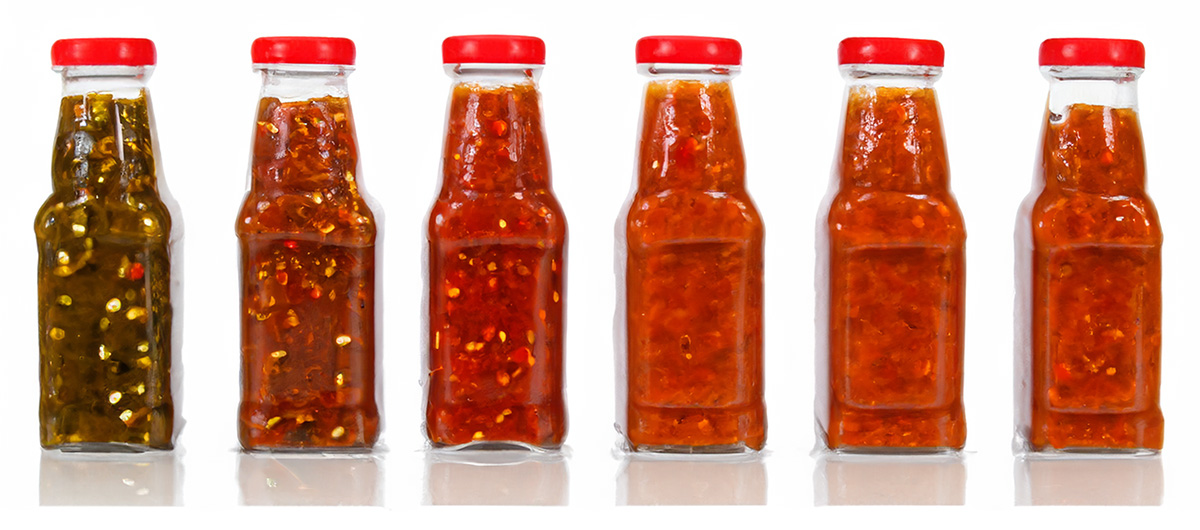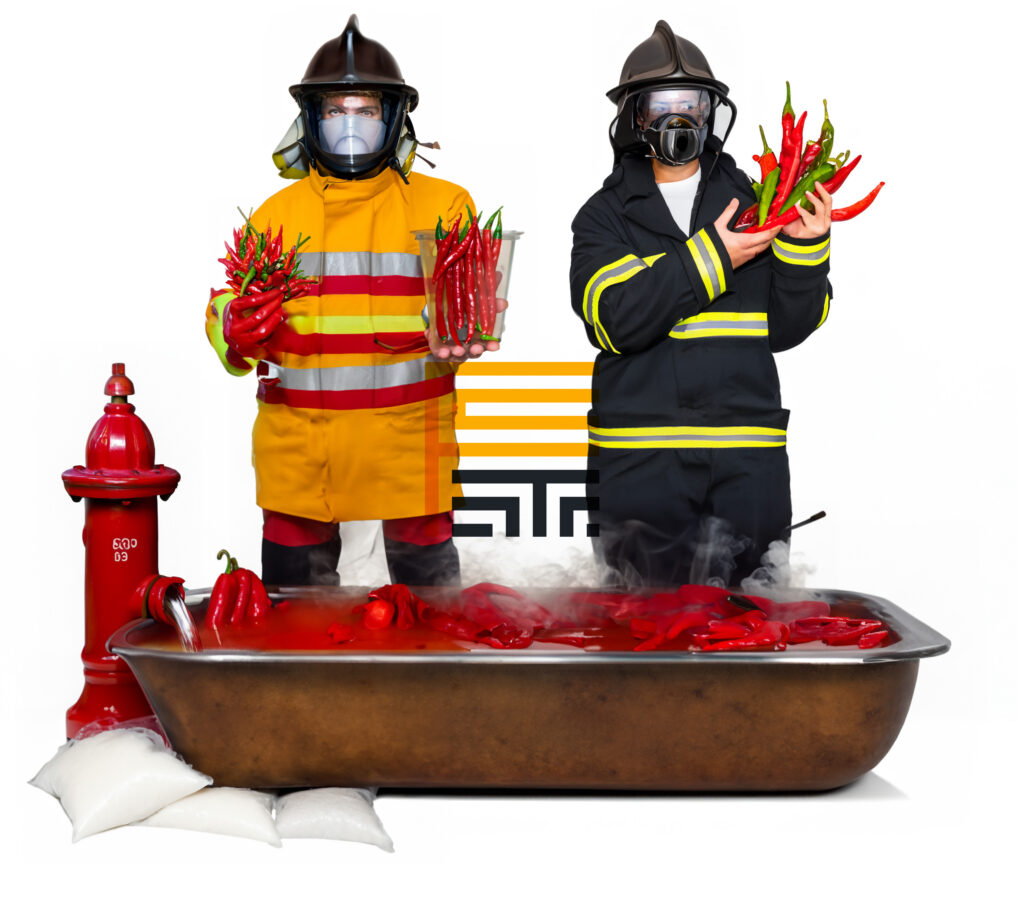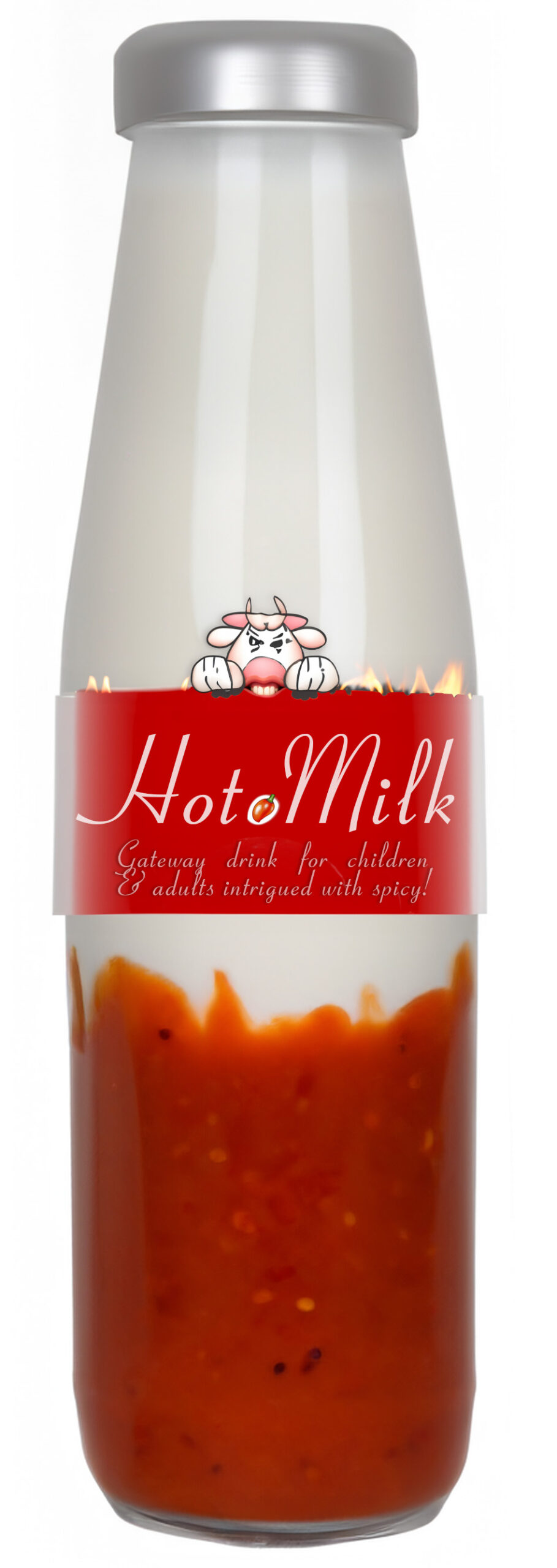Building a tolerance to heat
 Building a tolerance to spicy food as you eat more of it is a fascinating physiological and sensory adaptation. Here’s why this happens:
Building a tolerance to spicy food as you eat more of it is a fascinating physiological and sensory adaptation. Here’s why this happens:
- Desensitization of Pain Receptors: The primary component that makes food spicy is capsaicin, found in chili peppers. Capsaicin binds to the pain receptors in your mouth, specifically the TRPV1 receptors, which are responsible for sensing heat and pain. When exposed to capsaicin regularly, these receptors become less sensitive over time. It’s like turning down the volume on a loudspeaker; the noise (or, in this case, the spiciness) doesn’t change, but your perception of it becomes less acute.
- Endorphin Release: Eating spicy food triggers the release of endorphins, the body’s natural painkillers. These chemicals create a feeling of euphoria similar to a “runner’s high.” As you consume more spicy food, your body may begin to associate the heat with the pleasant endorphin rush, changing your perception of the spiciness from something painful to something enjoyable.
- Psychological Factors: There’s also a psychological component to developing a tolerance for spicy foods. If you frequently eat spicy food, you may mentally prepare for the heat and manage your reaction to it more effectively. This mental conditioning can make you feel like the food is less spicy.
- Gastronomic Acclimatization: Regular consumption of spicy foods can lead to gastronomic acclimatization, where your taste buds and digestive system gradually get used to the heat. Over time, what once seemed overwhelmingly spicy can become more manageable and even pleasant.
- Altered Pain Threshold: Regular exposure to spicy food might increase your overall pain threshold. Studies suggest that the consistent consumption of capsaicin-containing foods can lead to a higher tolerance for other types of physical pain as well, not just the burning sensation of spiciness.
- Cultural and Dietary Habits: People raised in cultures where spicy food is prevalent are often introduced to it from a young age, which can lead to an increased tolerance over time. In contrast, those who start eating spicy foods later in life might find it takes longer to develop this tolerance.
- Neurological Adaptation: The nervous system can adapt to regular exposure to capsaicin, leading to a decreased sensory response. Essentially, your nerves become better at handling the stimulus and react less dramatically.
In summary, building a tolerance to spicy food involves a combination of physiological changes in the pain receptors, psychological conditioning, endorphin release, cultural influences, and overall neurologic and gastronomic adaptation. This process illustrates the remarkable ability of our bodies and minds to adapt to different sensory experiences.

Interesting and sometimes unexpected physiological reactions
 Eating spicy food can lead to several interesting and sometimes unexpected physiological reactions. Here are some noteworthy phenomena:
Eating spicy food can lead to several interesting and sometimes unexpected physiological reactions. Here are some noteworthy phenomena:
- Fetal Reactions to Spicy Foods During Pregnancy:
- Some studies suggest that fetuses can experience flavours from the food their mothers eat through the amniotic fluid. If a pregnant woman consumes spicy food, the fetus may be able to taste or react to this change in flavor. However, the exact nature of these reactions and their implications are still a subject of ongoing research.
- Sweating (Gustatory Sweating):
- Eating spicy food often causes sweating, particularly around the face and scalp. This is known as gustatory sweating. It’s a thermoregulatory response to the heat sensation caused by capsaicin in spicy foods. Capsaicin tricks the body into thinking it’s overheating, prompting it to activate sweat glands to cool down, even though there’s no actual increase in body temperature.
- Feeling of Euphoria:
- The consumption of spicy food leads to the release of endorphins, which are natural pain relief chemicals in the brain. Endorphins are released in response to the burning sensation capsaicin produces, which is interpreted by the brain as a form of pain. This endorphin release can create a sense of euphoria, sometimes referred to as a “chili high.”
- Burning Sensation During Excretion:
- When spicy food is digested, not all capsaicin is broken down in the digestive system. As a result, when it passes through the sensitive skin of the anus during excretion, it can cause a burning sensation similar to what is experienced in the mouth. This is because the same type of pain receptors are present in both areas.
- Runny Nose and Teary Eyes:
- The capsaicin in spicy foods can irritate the mucous membranes in the nose and eyes, leading to a runny nose and teary eyes. This is the body’s way of trying to flush out or dilute the irritating substance.
- Temporary Numbness or Tolerance to Other Flavors:
- Spicy foods, especially those high in capsaicin, can temporarily numb the taste buds, making it harder to discern other flavors. Over time, regular consumption of spicy foods can also lead to a general tolerance or desensitization to their heat, as well as to other tastes and sensations.
- Stomach Discomfort and Indigestion:
- For some individuals, especially those not accustomed to spicy food, the consumption of such foods can lead to stomach discomfort or indigestion. Capsaicin can irritate the stomach lining, causing a burning sensation, discomfort, or even temporary digestive issues.
These phenomena highlight the complex interactions between spicy foods and our body’s sensory and physiological responses. While often enjoyable for many, these reactions can vary greatly from person to person, depending on individual tolerance levels and exposure to spicy foods.


 Hot sauces, a popular condiment in many cuisines around the world, are primarily known for their spiciness, which comes from capsaicin, the active component in chili peppers. However, the composition and flavor profile of hot sauces can vary widely depending on their ingredients and preparation methods. Here’s an overview:
Hot sauces, a popular condiment in many cuisines around the world, are primarily known for their spiciness, which comes from capsaicin, the active component in chili peppers. However, the composition and flavor profile of hot sauces can vary widely depending on their ingredients and preparation methods. Here’s an overview:
 Hot peppers, with their rich history and diverse uses, are fascinating. Here are 50 interesting facts about them:
Hot peppers, with their rich history and diverse uses, are fascinating. Here are 50 interesting facts about them:








